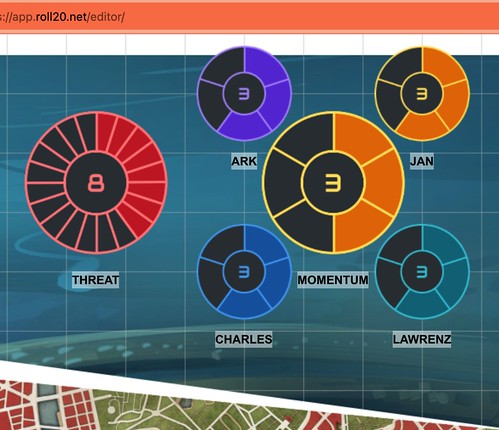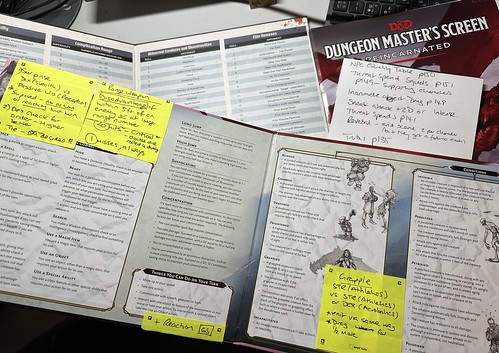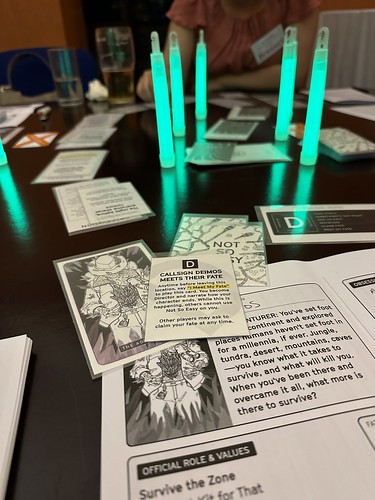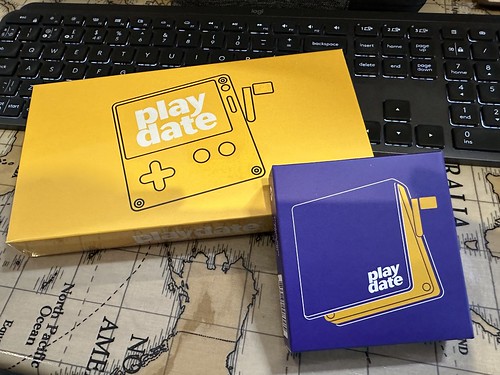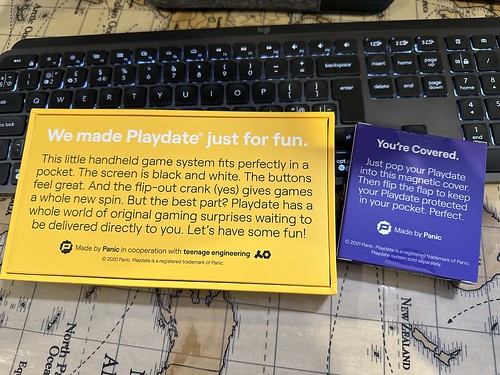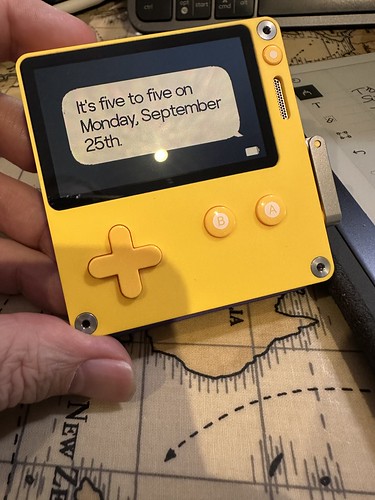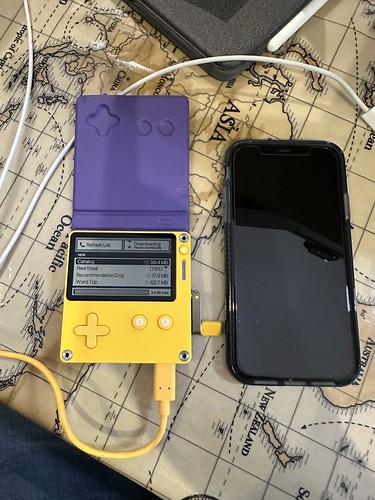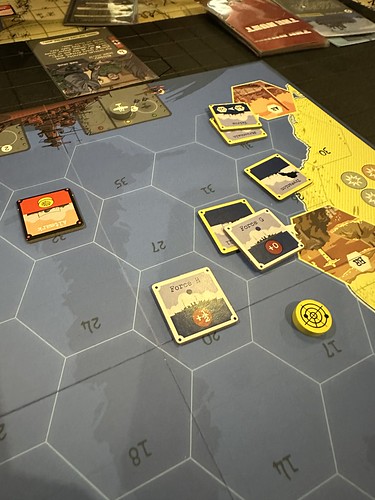 |
| Vaults of Vaarn - a blue world |
Vaults of Vaarn is a full roleplaying game inspired by the likes of the Book of the New Sun, Dune and Hyperion. As these are novels that I’ve enjoyed greatly, this was a factor in my decision to pick up a copy. That, and the book is published by Games Omnivorous who always produce really good quality product.
The books compiles the three Vaarn zines that Leo Hunt produced previously into one lushly produced digest volume. It’s very blue, strikingly so. The cover is embossed and the 144-page digest sized hardcover has a ribbon to keep your place. The text inside continues the blue theme; everything is blue on white (or the reverse).
The setting has a Dying Earth vibe. Vaarn is littered with the ruins of previous cultures, and much knowledge was lost in the Great Collapse. The sky-blue sands of Vaarn have buried treasures and hidden secrets; its a hinterland far from the New Hegemony to the south, a place people come to hide, explore or just exist beyond the controls and strictures of society. The sun is a dying red giant; it won’t go out soon but, as the book says, synths (robots) may be concerned. Technology sits alongside fantasy tropes. And yes, there are sandworms.
The game engine has six abilities, but the non-physical stats have different names (Intellect, Psyche and Ego). Resolution mechanic is the save. You roll 1d20, looking for 15+ to succeed. Opposed rolls go against the ability defence score of a character. Advantage and disadvantage can be granted.
Encumbrance is limited by Constitution modifier, and characters will want to use some of this for water or they will ultimately die. Mystic gifts (often driven by nanotechnology) can be obtained, but take item slots. Exotica, the strange relics of older civilisations, are the McGuffin that drives the characters to do things. You need to find them to progress and raise in level.
Initiative is a d6 roll off to see who goes first; on a tie, it’s the players.Damage consumes hit points, and then cause wounds. The wounds consume item slots; if you hit zero slots you die. There’s a short and long rest mechanic. If ability defences have been depleted, they recover slowly, needing a long rest for each point.
Abilities are rolled on 3d6 in order. The lowest dice gives the ability bonus. You can swap two abilities around. Defence values for each are generated by adding 10 to the bonus.
There are a number of ancestries to choose from: The first is the True-Kin (humans who are unchanged by the Great Collapse because their ancestors were sealed in hidden archologies during the Great Collapse). They get a bonus dealing with other true-kin and also have a chance that pre-Collapse systems will recognise and obey them. There are useful tables to randomly generate a look and background (something that’s repeated for all ancestries).
Synths (robots) are the next option; survivors from the Great Collapse who were freed from the need to serve humanity. Their synthetic flesh is resistant to damage, but they are vulnerable to electrical and code based attacks.
Newbeasts are uplifted humanoid animals, who tend to live at the edges of human society. Their animal nature can give them advantage or disadvantage dependent upon the situation that they find themselves in.
Mycomorphs are a fusion of humanity and fungi, a being remade from the corpse of a human. Sometimes they can remember their past life, and can eat most organic matter, gaining a bonus on recovery if it is rotted.
Cacogens are the mutated descendants of humans who didn’t have a safe refuge in the Great Collapse. They outnumber true-kin by an order of magnitude and believe themselves to be the true inheritors of Urth after the Collapse. Their mutations give them a wide range of advantages and disadvantages, dependent upon the situation.
Each character starts with a mystic gift (or a cybernetic implant) and an item of exotica. Base equipment is obtained by rolling on a table for weapons, gear and armour.
The referee rules are short (mainly on how to deal with NPC reactions and how to creat adversaries). There’s a focused set of principles on how to play and how to bring out the best of the setting. The bestiary is novel and different, and has an encounter table to use with it. A table of d100 exotica is given as an example. There’s a section on travel with procedures and transport options (ranging from camels to dune buggies, to wind barges. Alongside this is a system for the weather and the changes it makes on the sands. The section rounds out with a quick NPC generator, a table for what you find in the sand and another table to randomly generate the petty gods of Vaarn; the myriad of forgotten and abandoned faiths.
The next major section deals with creating a region to play in. This has a dice drop method, with locations drawn from a table (access to certain levels of which can only be done through using dice with a higher number of sides). The locations are interlinked as a point crawl, and there are extensive tables to generate each. It’s a quiet way of establishing a sandbox to play in.
Vaults are the next stage, as characters will want to seek them out to find exotica. There’s a procedural system to guide you in creating them (and an example Vault at the end of the book). These are the ‘dungeons’ of the setting. Random tables are included to generate ideas, and look useful.
The next major section describes Gnomon, the city that stands at the edge of the Vaarn badlands and may well serve at the base from which the characters head out from on expeditions, although there are suggestions for other reasons to visit the city. Water is a significant currency in the city, with the source controlled by the Water Baron Ancamulla. The New Hegemony Consul, a member of House Lonrot, has not seized control of the water because the Water Baron claims to have the power to destroy the source, which would cause the city to fail. It’s not known if this is a bluff, but the New Hegemony does not want to risk the loss of the city and has settled for a free water ration for the Consul and his forces.
There’s a short and evocative description of the various quarters of the city, along with key sites to see. After this, the various factions are explored, along with the benefits of joining them and how to use them as an ally or a villain. As well as the Water Baron and the Consul, Vaults of Vaarn also offers the Fifth Hegemony Legion, the Church of the Promised Sun, the criminal Prieval’s crew, the Friends of Jak and the Crimson Court as significant factions. There’s some guidance on how to use the factions. Minor groups are also discussed, and there are tables to build conflicts with and between Noble Houses, Trade Cartels, the Urban Shrines of Minor Gods, and the Philosopher’s Guilds which can act as plot ideas for scenarios.There are also random tables for ongoing drama, hassle on the streets, buildings and their histories, street merchants, mercenaries and pit-fighters, taverns and criminal gangs. Plenty of sparks to bring life to a campaign.
A section explores potential significant changes in Gnomon, which could be the over-arching plot for a campaign (for example, the Hegemony sends an Inquistor to establish a new branch of the House of Corrections and ensure the city is run appropriately).
The book wraps up with four vaults and locations to explore, all of which should give a good evening of play. There’s an appendix on the long dead Titans, and another on the languages spoken.
All in all, this is an inspiring book, with plenty to use to build a campaign at the table. The rules are light enough that you could easily use another system if you preferred (for example, I’m thinking parts of this would work well with the Ultra-Violet Grasslands). It feels very OSR in style, in the sense that it presents a setting and plenty of tables and ideas to build from rather than a default fully developed campaign. It nails the feel of a Dying Earth, and mixes some great inspirations together to form a cohesive and unique setting of its own.
22 December 2023
